Easy tomato growing for beginners can feel like a daunting task, but trust me, it doesn’t have to be! Have you ever dreamed of biting into a juicy, sun-ripened tomato, bursting with flavor, that you grew yourself? Imagine the satisfaction of serving a fresh Caprese salad made entirely from your own backyard bounty. This isn’t just a pipe dream; it’s an achievable reality with a few simple tricks and DIY hacks.
Tomatoes have a rich history, originating in South America and gradually making their way into cuisines worldwide. From the vibrant sauces of Italy to the refreshing salsas of Mexico, the tomato has become a culinary staple. But beyond their deliciousness, growing your own tomatoes connects you to a tradition of self-sufficiency and a deeper appreciation for the food we eat.
In today’s world, where we’re increasingly conscious of where our food comes from, easy tomato growing for beginners offers a fantastic way to control the quality and freshness of your produce. Plus, let’s be honest, store-bought tomatoes often lack the intense flavor of homegrown varieties. This article is packed with DIY tips and tricks that will empower you, even if you’ve never touched a trowel before, to cultivate a thriving tomato garden. We’ll cover everything from choosing the right varieties to simple pest control solutions, ensuring you’ll be harvesting delicious tomatoes in no time. Let’s get started!
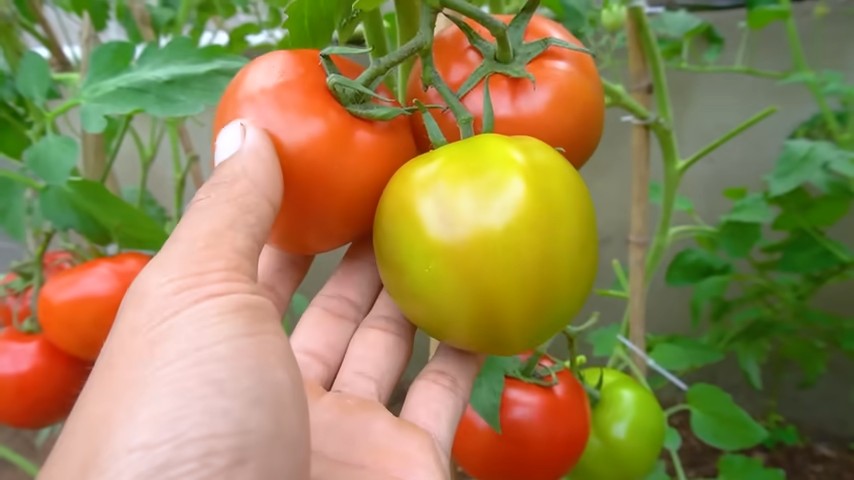
Growing Tomatoes Like a Pro (Even if You’re a Beginner!)
Okay, so you want to grow tomatoes? Awesome! There’s nothing quite like biting into a sun-warmed, juicy tomato you grew yourself. Trust me, it’s way easier than you think. I’m going to walk you through everything you need to know to get started, from choosing the right variety to harvesting your delicious bounty. Let’s get our hands dirty!
Choosing Your Tomato Varieties
Before we even think about planting, we need to pick our tomato stars! There are literally hundreds of varieties, but don’t let that overwhelm you. Here’s a breakdown to help you choose:
* **Determinate vs. Indeterminate:** This is key!
* **Determinate:** These are bush-type tomatoes that grow to a certain size and then stop. They produce most of their fruit all at once, making them great for canning or making sauce. Think Roma or Celebrity.
* **Indeterminate:** These are vining tomatoes that keep growing and producing fruit throughout the season. They need staking or caging. Think Beefsteak, Cherry, or Heirloom varieties.
* **Size and Use:**
* **Cherry/Grape Tomatoes:** Small, sweet, and perfect for snacking or salads.
* **Roma/Paste Tomatoes:** Meaty, with fewer seeds, ideal for sauces and canning.
* **Slicing Tomatoes:** Large, juicy, and perfect for sandwiches and burgers. Think Beefsteak or Brandywine.
* **Disease Resistance:** Look for varieties labeled with letters like V, F, N, T, or A. These indicate resistance to common tomato diseases like Verticillium wilt, Fusarium wilt, Nematodes, Tobacco Mosaic Virus, and Alternaria.
* **My Recommendations for Beginners:**
* **Early Girl:** A reliable, early-producing variety that’s great for cooler climates.
* **Better Bush:** A compact determinate variety perfect for containers.
* **Roma:** A classic paste tomato that’s easy to grow and produces tons of fruit.
* **Sungold:** An incredibly sweet and flavorful cherry tomato that everyone loves.
Getting Started: Seeds vs. Seedlings
You have two options: starting from seeds or buying seedlings (small tomato plants) from a nursery.
* **Starting from Seeds:** This gives you more variety options and is generally cheaper, but it requires more time and effort. You’ll need to start your seeds indoors about 6-8 weeks before the last expected frost.
* **Buying Seedlings:** This is the easier option, especially for beginners. You can find healthy seedlings at most garden centers in the spring. Just make sure to choose plants that are sturdy, green, and free of spots or pests.
Starting from Seeds (If You’re Feeling Ambitious!)
If you’re going the seed route, here’s what you’ll need:
* Seed starting trays or small pots
* Seed starting mix (a sterile, lightweight soil mix)
* A heat mat (optional, but helpful for germination)
* A grow light (essential for strong seedlings)
* A spray bottle
Here’s the process:
1. **Sow the Seeds:** Fill your seed starting trays or pots with seed starting mix. Moisten the mix with water. Sow 2-3 seeds per cell or pot, about 1/4 inch deep.
2. **Provide Warmth:** Place the trays on a heat mat (if using) and cover them with a clear plastic dome or plastic wrap to create a humid environment.
3. **Keep Moist:** Mist the soil regularly with a spray bottle to keep it moist but not soggy.
4. **Germination:** Once the seeds germinate (usually within 5-10 days), remove the plastic cover and place the trays under a grow light.
5. **Provide Light:** Keep the grow light on for 14-16 hours per day. Adjust the height of the light as the seedlings grow, keeping it a few inches above the plants.
6. **Thin the Seedlings:** Once the seedlings have their first true leaves (the second set of leaves that appear after the initial seed leaves), thin them to one seedling per cell or pot. Choose the strongest seedling and snip off the others at the soil line.
7. **Harden Off:** About a week before you plan to transplant the seedlings outdoors, you need to “harden them off.” This means gradually exposing them to outdoor conditions. Start by placing them outside in a sheltered spot for an hour or two each day, gradually increasing the amount of time they spend outdoors. This will help them acclimate to the sun, wind, and temperature changes.
Preparing Your Garden Bed
Whether you’re using seedlings or starting from seed, preparing your garden bed is crucial.
1. **Choose a Sunny Spot:** Tomatoes need at least 6-8 hours of sunlight per day.
2. **Prepare the Soil:** Tomatoes thrive in well-drained, fertile soil. Amend your soil with compost or other organic matter to improve its drainage and nutrient content. I usually add a generous amount of composted manure.
3. **Check the pH:** Tomatoes prefer a slightly acidic soil pH of around 6.0-6.8. You can test your soil pH with a soil testing kit and amend it accordingly.
4. **Consider Raised Beds:** Raised beds are a great option for growing tomatoes, especially if you have poor soil drainage.
Transplanting Your Tomato Seedlings (or Planting Your Purchased Seedlings)
Okay, the moment we’ve been waiting for!
1. **Wait for Warm Weather:** Don’t transplant your tomatoes until after the last expected frost and the soil has warmed up to at least 60°F (15°C).
2. **Dig the Holes:** Dig holes that are slightly larger than the root ball of your seedlings. Space the holes about 2-3 feet apart for determinate varieties and 3-4 feet apart for indeterminate varieties.
3. **Plant Deep:** This is a secret weapon! Plant your tomato seedlings deep, burying the stem up to the first set of leaves. Tomatoes can grow roots along their stems, which will result in a stronger, healthier plant.
4. **Remove Lower Leaves:** Before planting, remove the lower leaves from the stem that will be buried.
5. **Add Fertilizer:** Add a small amount of slow-release fertilizer to the bottom of each hole.
6. **Water Thoroughly:** After planting, water the seedlings thoroughly.
Supporting Your Tomato Plants
Indeterminate tomato varieties need support to keep them off the ground and prevent them from sprawling.
* **Staking:** Drive a sturdy stake into the ground next to each plant and tie the main stem to the stake with soft twine or plant ties.
* **Caging:** Place a tomato cage around each plant. This is a good option for bushier varieties.
* **Trellising:** Use a trellis to support the tomato plants. This is a good option for growing tomatoes in a row.
Watering and Fertilizing
* **Watering:** Water your tomato plants deeply and regularly, especially during hot, dry weather. Aim for about 1-2 inches of water per week. Water at the base of the plant to avoid wetting the leaves, which can lead to disease.
* **Fertilizing:** Fertilize your tomato plants every 2-3 weeks with a balanced fertilizer. Look for a fertilizer that is specifically formulated for tomatoes. I like to use a liquid fertilizer diluted in water.
Dealing with Pests and Diseases
Tomatoes are susceptible to a variety of pests and diseases. Here are some common problems and how to deal with them:
* **Aphids:** These small, sap-sucking insects can weaken your plants. Spray them with a strong stream of water or use insecticidal soap.
* **Tomato Hornworms:** These large, green caterpillars can quickly defoliate your plants. Pick them off by hand or use Bacillus thuringiensis (Bt), a natural insecticide.
* **Blossom End Rot:** This is caused by a calcium deficiency and results in a dark, leathery spot on the bottom of the tomato. Ensure consistent watering and add calcium to the soil.
* **Early Blight:** This fungal disease causes dark spots on the leaves. Remove infected leaves and spray with a fungicide.
* **Septoria Leaf Spot:** This fungal disease causes small, circular spots on the leaves. Remove infected leaves and spray with a fungicide.
Harvesting Your Tomatoes
The best part!
1. **Wait for Ripeness:** Tomatoes are ripe when they are fully colored and slightly soft to the touch.
2. **Gently Twist:** Gently twist the tomato off the vine.
3. **Enjoy!** Eat your tomatoes fresh, or use them in your favorite recipes.
Extra Tips for Tomato Success
* **Mulch:** Apply a layer of mulch around your tomato plants to help retain moisture, suppress weeds, and regulate soil temperature.
* **Prune:** Prune your indeterminate tomato plants to improve air circulation and encourage fruit production. Remove suckers (the small shoots that grow between the main stem and the
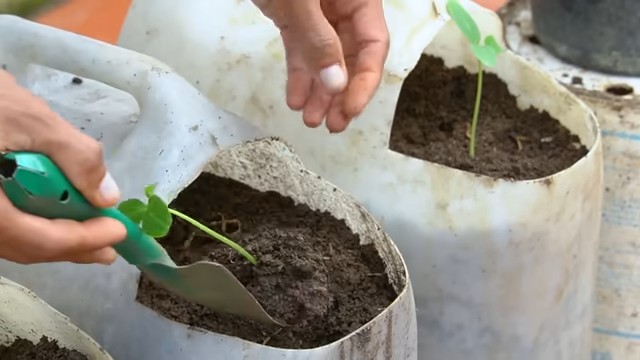
Conclusion
So, there you have it! Mastering the art of easy tomato growing for beginners doesn’t have to be an intimidating endeavor. By implementing these simple yet effective DIY tricks, you’re setting yourself up for a bountiful harvest of delicious, homegrown tomatoes. We’ve covered everything from selecting the right variety and preparing your soil to providing adequate support and warding off common pests and diseases. Remember, the key is consistency and observation. Regularly check your plants, address any issues promptly, and don’t be afraid to experiment.
This isn’t just about saving money; it’s about connecting with nature, understanding where your food comes from, and enjoying the unparalleled flavor of a tomato picked fresh from your own garden. Imagine the satisfaction of serving a salad made entirely from ingredients you nurtured yourself, or the joy of sharing your homegrown bounty with friends and family.
But the journey doesn’t end here! Feel free to explore variations on these techniques. For example, if you’re short on space, consider growing tomatoes in hanging baskets or containers. You can also experiment with different types of organic fertilizers or companion planting strategies to further enhance your tomato production. Try adding basil near your tomato plants to deter pests and improve the flavor of your tomatoes. Marigolds are also excellent companion plants for tomatoes, as they help to repel nematodes and other harmful insects.
Don’t be afraid to get creative and adapt these methods to suit your specific needs and environment. The beauty of gardening is that there’s always something new to learn and discover.
We are confident that with a little patience and effort, you’ll be amazed at what you can achieve. The taste of a sun-ripened, homegrown tomato is simply incomparable to anything you can buy in a store. It’s a flavor explosion that will tantalize your taste buds and leave you craving more.
Now, it’s your turn! We encourage you to put these DIY tricks into practice and experience the joy of growing your own tomatoes. Share your experiences with us in the comments below. We’d love to hear about your successes, challenges, and any other tips you’ve discovered along the way. Let’s create a community of tomato-growing enthusiasts and learn from each other.
What are you waiting for? Grab your gardening gloves, head to your local nursery, and start your tomato-growing adventure today! You won’t regret it. Happy gardening!
Frequently Asked Questions (FAQ)
Q: What is the best type of tomato to grow for a beginner?
A: For beginners, determinate tomato varieties are generally recommended. These varieties grow to a specific size and produce all their fruit at once, making them easier to manage. Some excellent choices include Roma, Celebrity, and Early Girl. These varieties are also known for their disease resistance, which is a significant advantage for novice gardeners. Indeterminate varieties, on the other hand, continue to grow and produce fruit throughout the season, requiring more pruning and support.
Q: How often should I water my tomato plants?
A: The frequency of watering depends on several factors, including the weather, soil type, and size of your plants. As a general rule, water deeply and less frequently, rather than shallowly and often. Aim to water your tomato plants when the top inch of soil feels dry to the touch. During hot, dry weather, you may need to water daily, while during cooler, wetter periods, you may only need to water every few days. Avoid overhead watering, as this can promote fungal diseases. Instead, water at the base of the plant, using a soaker hose or drip irrigation system if possible.
Q: What kind of fertilizer should I use for my tomato plants?
A: Tomato plants are heavy feeders and require a balanced fertilizer to thrive. Look for a fertilizer with an NPK ratio (nitrogen, phosphorus, potassium) that is specifically formulated for tomatoes. A good starting point is a 5-10-5 or 10-10-10 fertilizer. You can also use organic fertilizers, such as compost, bone meal, and fish emulsion. Apply fertilizer according to the package instructions, and be careful not to over-fertilize, as this can lead to excessive foliage growth and reduced fruit production. Side-dress your tomato plants with fertilizer every few weeks throughout the growing season.
Q: How do I prevent pests and diseases from attacking my tomato plants?
A: Prevention is key when it comes to pests and diseases. Start by selecting disease-resistant tomato varieties. Ensure that your plants have good air circulation by spacing them adequately and pruning away any suckers or overcrowded foliage. Regularly inspect your plants for signs of pests or diseases, such as aphids, whiteflies, or fungal spots. If you spot any problems, address them promptly with organic pest control methods, such as insecticidal soap or neem oil. You can also use row covers to protect your plants from pests early in the season. Crop rotation is also important to prevent soilborne diseases from building up.
Q: How do I know when my tomatoes are ripe?
A: The color of the tomato is the best indicator of ripeness. Tomatoes will typically turn from green to yellow, orange, and finally red when they are ripe. The exact color will depend on the variety of tomato. The tomato should also feel slightly soft to the touch, but not mushy. Gently squeeze the tomato; if it gives slightly, it’s likely ripe. The aroma of a ripe tomato is also a good indicator. Ripe tomatoes will have a sweet, fragrant smell.
Q: Can I grow tomatoes in containers?
A: Yes, you can definitely grow tomatoes in containers! Choose a large container, at least 20 gallons in size, with good drainage. Use a high-quality potting mix, not garden soil, as garden soil can become compacted in containers. Select determinate or dwarf tomato varieties for container growing, as they are more compact and manageable. Provide adequate support for your plants, such as a stake or cage. Water and fertilize your container tomatoes regularly, as they will dry out and deplete nutrients more quickly than tomatoes grown in the ground.
Q: What do I do with tomato suckers?
A: Tomato suckers are the small shoots that grow between the main stem and the branches of the plant. For indeterminate tomato varieties, it’s generally recommended to prune away the suckers to encourage the plant to focus its energy on producing fruit. Simply pinch off the suckers with your fingers or use pruning shears. For determinate tomato varieties, pruning suckers is not necessary, as these varieties produce all their fruit at once.
Q: My tomato plants are flowering, but not producing fruit. What could be the problem?
A: There are several reasons why your tomato plants may be flowering but not producing fruit. One common cause is lack of pollination. Tomatoes are self-pollinating, but they may need some help from wind or insects to transfer pollen. You can gently shake your tomato plants or use a small brush to manually pollinate the flowers. Another possible cause is temperature stress. Tomatoes prefer temperatures between 60°F and 90°F. If temperatures are too hot or too cold, the flowers may drop off without setting fruit. Insufficient watering or fertilization can also prevent fruit production.
Q: How can I improve the flavor of my homegrown tomatoes?
A: The flavor of your homegrown tomatoes can be influenced by several factors. Choose tomato varieties that are known for their flavor. Provide your plants with plenty of sunlight, as sunlight is essential for sugar production. Water your plants deeply and less frequently, as this will encourage the roots to grow deeper and access more nutrients. Avoid over-fertilizing, as this can lead to bland-tasting tomatoes. Allow your tomatoes to ripen fully on the vine before harvesting them. Finally, consider adding organic matter to your soil, such as compost or aged manure, to improve its nutrient content and drainage.


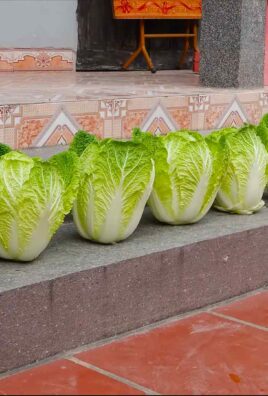
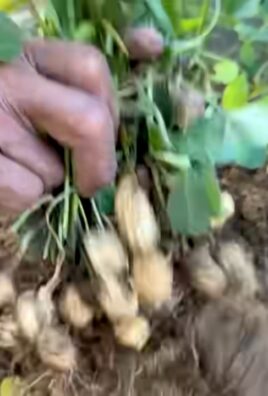
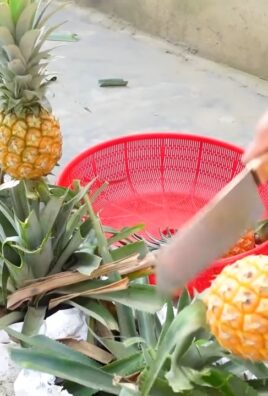
Leave a Comment